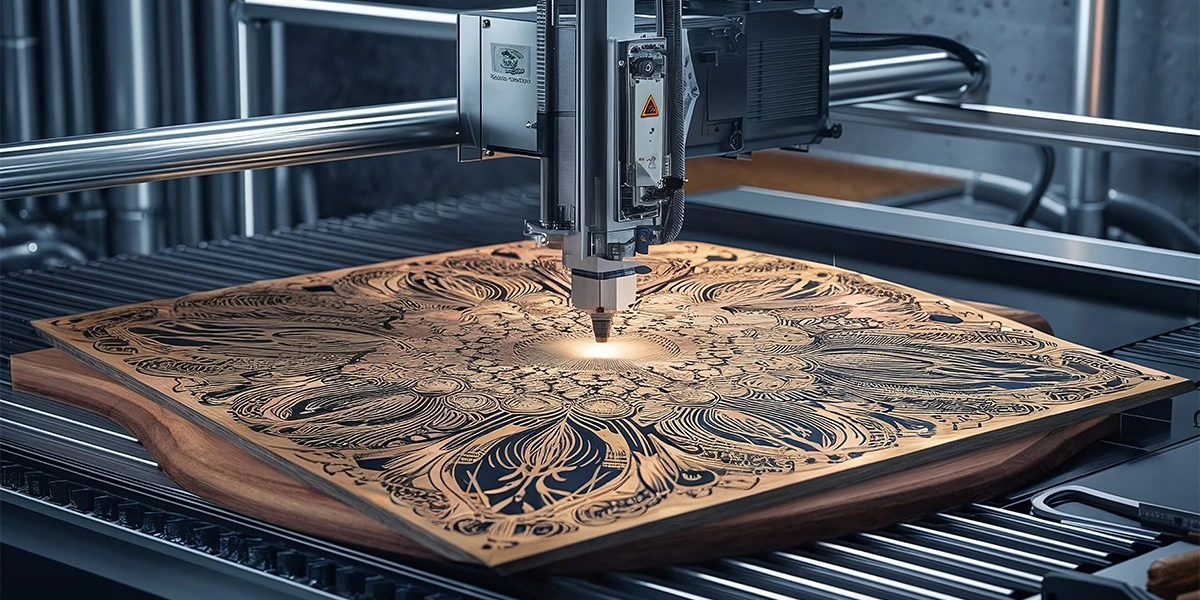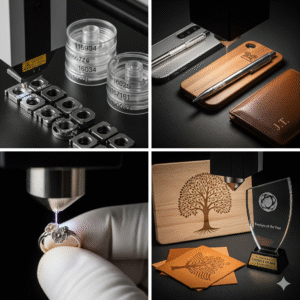
What is a Laser Engraving Machine and How Do You Use It? A Guide from Protomont Technologies.
At Protomont Technologies a laser engraving machines are designed with a permanent and high-quality marking capacity that improves the aesthetics and functional value of a wide variety of materials. Our technology will enable manufacturers to have a better finish on their products, even in the form of complex logos and decorative designs in wood and glass, or accurate and long-lasting markings in plastics and metals. The marks are designed to be durable, and this is to produce a high-quality look and feel that can withstand time and high-demand services, hence they are an ideal solution in luxury goods, custom signage and parts that are detailed in the automotive and medical device sectors.
What is a Laser Engraving Machine?
Laser engraving is a computerised process of marking a material on the surface of a substance with the use of a directed beam of a high-energy laser to vaporize a layer of the substance to produce a permanent and infinitely precise mark. (In comparison to traditional engraving, the tool used to create the mark physically touches the material). A laser engraving machine consists of the most important components: the laser source, the optical system, and lenses to focus the beam, and the other computer-controlled system to control the beam of laser and perform complicated designs.
How does it work?
The process of laser engraving is based on the principle of sublimation, which means that the strong heat of the laser transforms the material (immediately) into a gas form without going through the liquid stage, thus creating fine lines and tricky patterns as well as text and logos. This allows any type of fine lines and complex patterns, including text and logos, to be created.
Types of Laser Engraving Machines:
The use of a laser engraving machine is dependent on the type of laser source that the machine uses, and each type is most effective in various materials and applications.
Fiber Laser Markers: These are highly powerful and robust devices, where a laser diode is used to create a light beam that is conveyed through a fiber optic cable. It is particularly an excellent machine for marking and deep engraving on most metals (e.g., steel, aluminium, brass) and some plastics.
CO2 Laser Markers: CO2 lasers are widely used and are well suited to engraving and cutting organic substances, including wood, leather, plastics, paper and glass. It is a widely used type of laser in both industrial and hobbyist applications.
UV Laser Markers: UV machines also operate with ultraviolet light to mark materials, also commonly referred to as cold lasers, since they produce very little heat, which means that they do not produce thermal damage or micro-fractures in delicate materials such as some plastics and glass.<|human|>UV Laser Markers: UV machines also work with ultraviolet light to mark materials commonly known as cold laser, since they do not heat the materials, resulting in no thermal damage or micro-fractures.
Diode Lasers: Diode lasers are used in desktop and consumer-grade devices, and are an affordable and frequently used type of laser by hobbyists and small business owners to mark wood, leather, and certain plastics. Newer and more powerful models have also been able to mark some metal.
MOPA Lasers: A contemporary form of fiber laser, MOPA (Master Oscillator Power Amplifier) lasers provide greater flexibility.20 It can be used to produce a wider spectrum of pulse frequencies to enable the use of unique marking effects such as black marking anodized aluminum and color marking stainless steel.
Applications of the Laser Engraving Machine.
Contemporary laser engraving machines are very multifunctional and they find applications in a broad field spanning much further than mere identification.6 They are regarded as the best way to make long-lasting quality marks, and even to enhance the aesthetic worth of products.

Typical uses would be:
Industrial Parts Marking: Permanent serial numbers, barcodes, QR codes, 2D data matrix code marking of metal and plastic components and other parts used in industries such as the automotive, aerospace, and medical device manufacturing industries.
Product Personalization: Carving personal logos, letters or text on consumer products like luxury pens, keychains, phone cases, and trophies.
Jewelry and Luxury Goods: Etching complex patterns and personal messages and brand names onto metals such as gold, silver and platinum, which are precious metals.
Decorative & Artistic Applications: Making detailed art and designs on diverse kinds of materials such as wood, glass, leather, acrylic signs, furniture, and custom artwork.
Electronics: Labelling circuit boards, microchips and other minute and delicate electronic parts where accuracy and heat reduction are paramount.
What Do You Need for Laser Engraving?
In order to start laser engraving, there are several essential elements that are required to be safe, precise and effective.
A Laser Engraving Machine: The heart of your business. Select a machine depending on your size and materials you will deal with. Choices are industrial-grade, when dealing with large-scale production, and compact, entry-level products, when working with smaller operations. Various types of Lasers (e.g., CO2, Fiber, UV) can be applied to different materials.
Cooling System: Lasers produce a lot of heat and hence cooling system is necessary to avoid any damage. This may start with mere air cooling of lower-power machines to sophisticated water-cooled chillers used in industry on a 24-hour basis.
Some sort of Ventilation System: Laser engraving produces smoke and fumes. Ventilation system is essential in regards to safety as it gets rid of particulate matter of dangerous nature, and helps ensure the machine components are not clogged in residue.
Laser Software: This is the software that your designs need to be translated into in order to use them on the laser. Find easy-to-use applications that provide options to control certain important parameters such as power and speed, and fit your machine.
Materials: This is the last phase: prepare materials that you are going to be engraving. Before starting your actual project, you are usually forced to do test engraves on a scrap piece to determine that perfect settings of each material.

